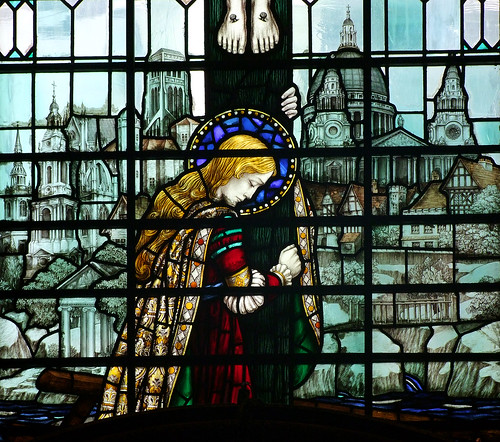| |
|
|
|
|
Now generally known as Holy Sepulchre, known in the past
as St Sepulchre Holborn, also St Sepulchre Old Bailey -
these were the bells of Old Bailey that asked when
can you pay me? - this is one of the biggest
churches in the City. No other City church has so much
the air of the most important church in a smaller,
provincial town - and probably as so often in the City,
an East Anglian town, as the south porch with its fan
vaulting suggests, we could be in Saxmundham, or
Swaffham, or Coggleshall, or March. But on stepping
inside there is the reminder that this church has
virtually no resident parishioners, for instead of the
highly polished, flower-bedecked small town civic pride
we'd find in Saxmundham, or Swaffham, or Coggleshall, or
March, here is a great dusty space full of disconnected
once-proud details, like a rich aunt who has gone awry.
And yet it is an entirely loveable church for all that,
and many people's City favourite, not least because the
Gothic exterior contains an entirely Wrenish interior -
or, at least, the spirit of Wren without the letter,
shoehorned into a medieval space. This is a rich aunt who
at first sight has stopped taking care of herself, but
the person she has become is admirable for her
eccentricity and intelligence. There's nothing quite like
it, and it makes you smile.How
did this happen? Well, the medieval church, which had
been rebuilt on a grand scale in the 15th Century, was
largely destroyed in the Great Fire, but the
reconstruction was something of a mish-mash, with Wren
falling out with the vestry. There was a revamp in the
late 18th Century when they tried to get rid of the bits
that still made it look medieval, and then a big one in
the 1870s to make it more medieval than it had ever been,
which is pretty much how you see it today. The interior
you step into is largely 19th Century, but full of colour
and interest. This is one of those churches where there
is always something around the next corner. The range of
20th Century glass is one of the most comprehensive in
the City, and the best of it is in the north aisle, the
musicians' chapel, by Brian Thomas. Other glass is by
Francis Skeat, AK Nicholson and GER Smith (a memorial
window to AK Nicholson, including an image of him in his
workshop).
The organ is fabulous. Sir Henry
Wood, who invented the Proms, was the organist here, and
is remembered in the musician's chapel in post-war glass
along with the likes of George Frederich Handel, William
Byrd, John Ireland and Dame Nellie Melba. There is a
memorial to Captain John Smith, remembered as the
governor of Virginia, but more familiar to us in our
Disneyfied times as the lover of Pocahontas. He's buried
here. Wayland Young mentions the tradition that the bells
of St Sepulchre not only tolled the curfew each night,
but also tolled as condemned men passed from the Newgate
prison to the scaffold at Tyburn. A church full of
stories then, a bit mad, all a bit disconnected, a
must-see.
Simon Knott, December 2015
location: Holborn Viaduct EC1A 2DQ - 1/058
status: working guild church
access: open Monday to Friday 10am - 2pm
website
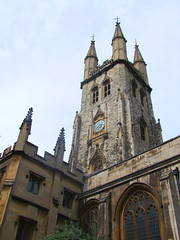 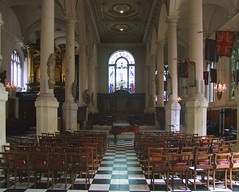 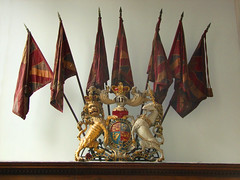 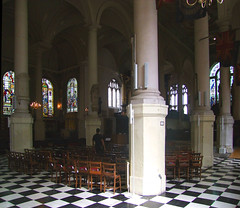 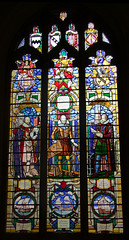 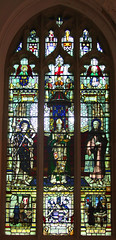 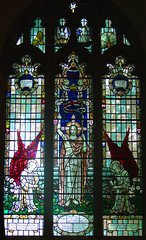 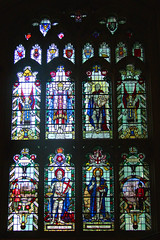 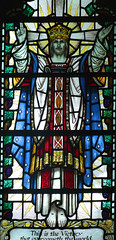 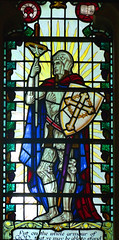 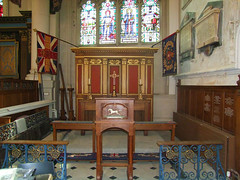 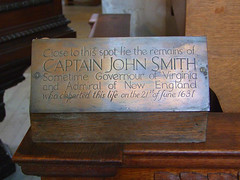 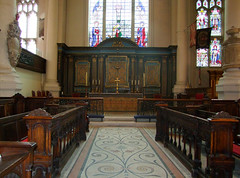 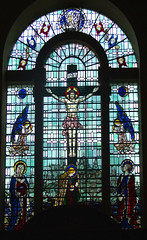 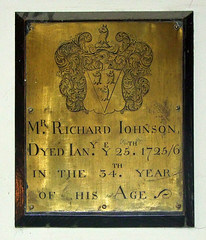 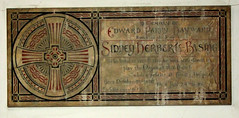 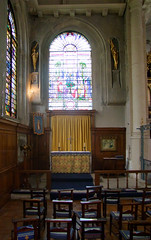 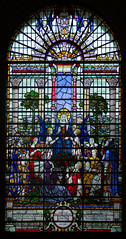 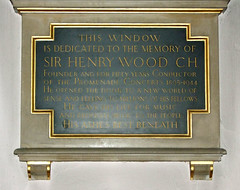 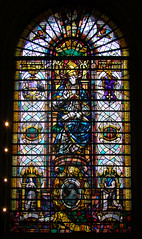 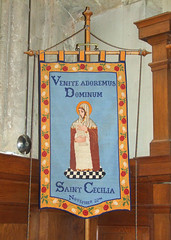 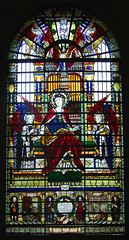 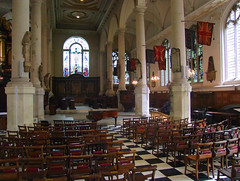 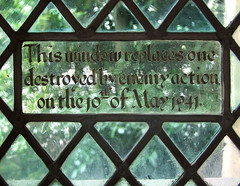 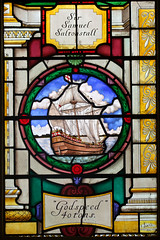 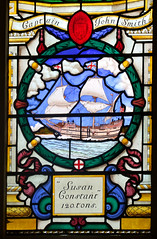 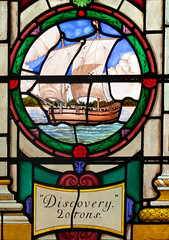 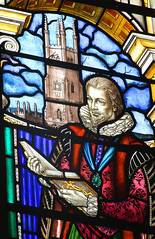 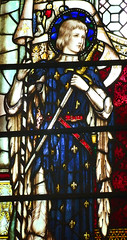 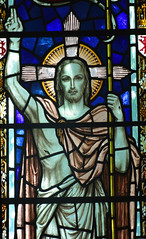 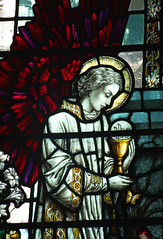 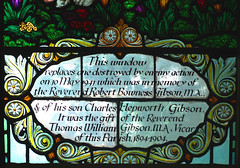 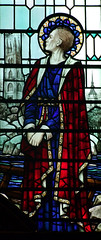 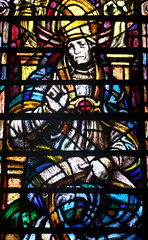 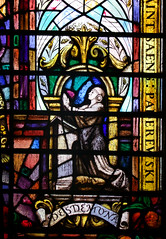 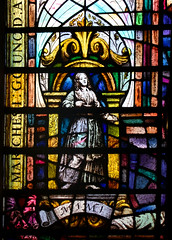 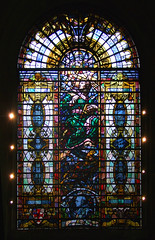 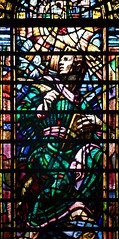 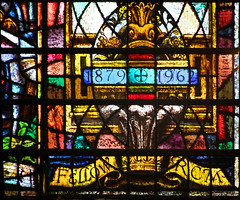 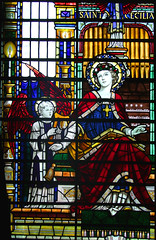 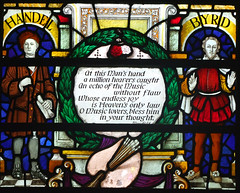 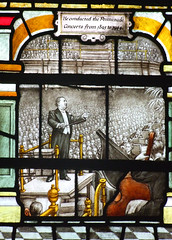 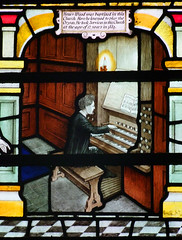 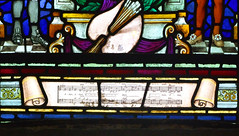 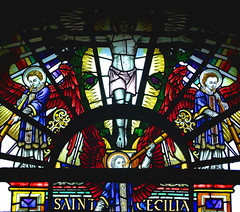 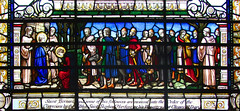 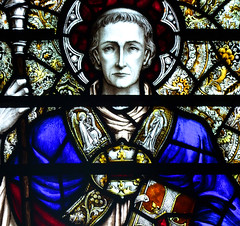 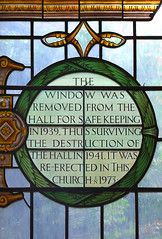 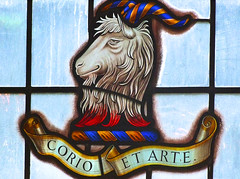 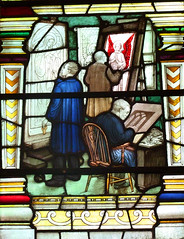 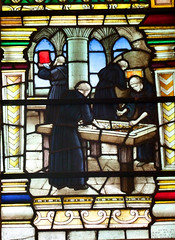 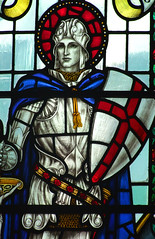 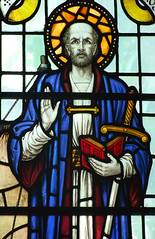 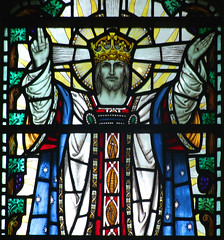 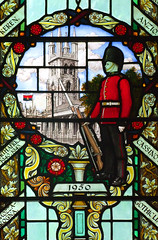 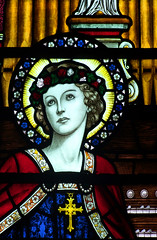 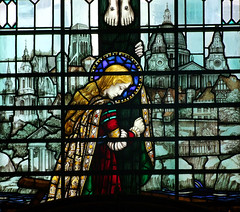 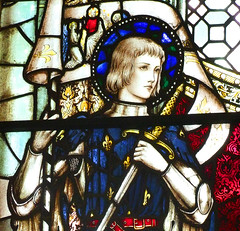 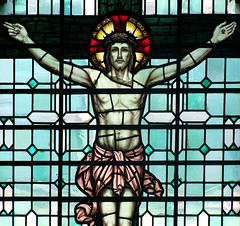 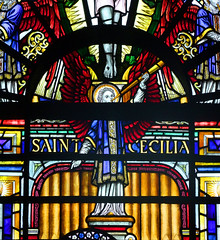 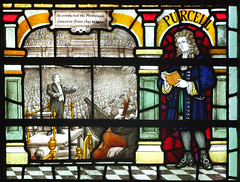 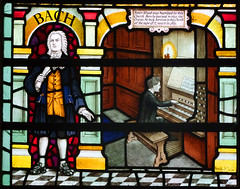 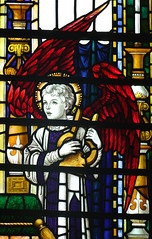 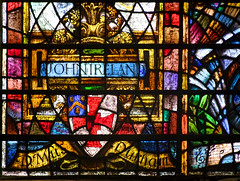 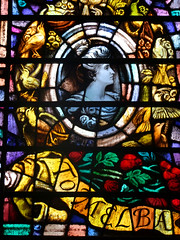 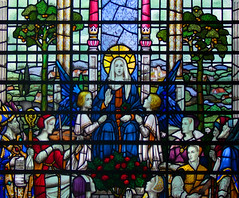 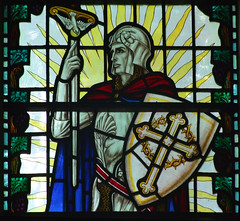 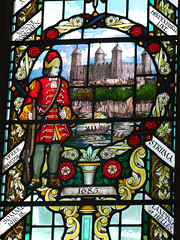
Commission
from Amazon.co.uk supports the running of this site
|
|
|
|
|
|


